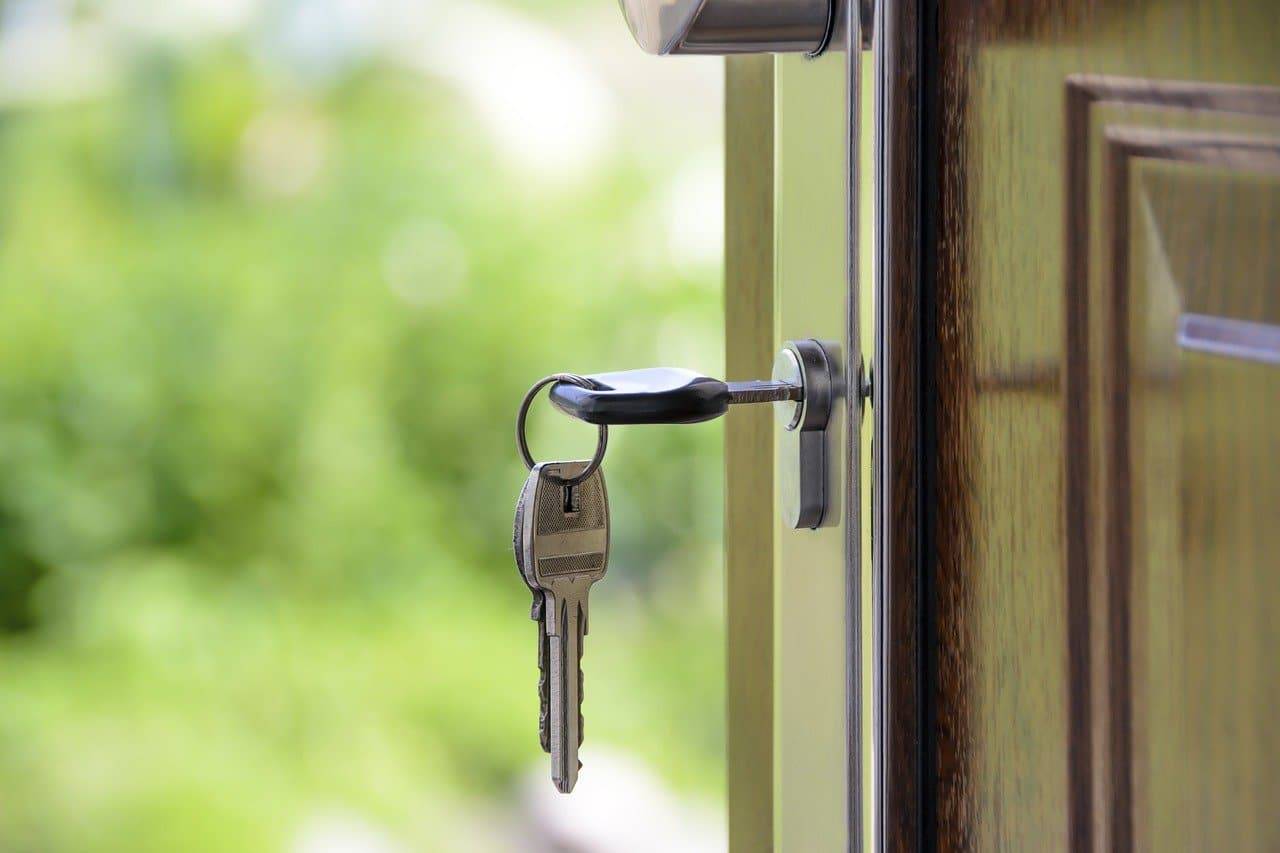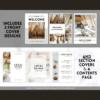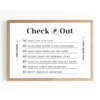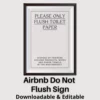I. Introduction
Welcome to our essential guide focused on “Ensuring Airbnb Guest Safety,” a critical aspect of hosting that impacts not only the well-being of guests but also the success and reputation of your Airbnb rental. As the world of travel continues to evolve, guests are increasingly prioritizing safety in their accommodation choices. This trend makes it vital for hosts to adopt rigorous safety protocols and communicate them effectively.
Ensuring guest safety isn’t just about avoiding accidents; it’s about creating an environment where guests feel secure, relaxed, and confident in their choice of stay. Whether you’re a new host or looking to enhance your existing rental, this guide will walk you through the necessary steps and considerations for maximizing guest safety and satisfaction.
As an Airbnb host, you play a pivotal role in providing a safe haven for travelers. This involves understanding and implementing various safety measures, staying informed about legal requirements, and continuously engaging with feedback to improve. By the end of this blog, you’ll be equipped with practical knowledge and resources to elevate your hosting game and ensure that every guest has a safe and memorable stay.
For more detailed guidelines and resources, Airbnb offers a comprehensive Safety Center that includes tips for hosts and guests alike. Familiarize yourself with their safety recommendations, and consider completing the Airbnb Safety Workshop, a resource designed to help you understand and implement safety measures in your rental. Prioritizing safety is not just a responsibility; it’s a commitment to excellence in hospitality that sets your listing apart and ensures that guests choose your rental time and again.
II. Understanding Airbnb Guest Safety
“Ensuring Airbnb guest safety” encompasses a broad spectrum of considerations, ranging from physical safety and security to health and emotional well-being. As a host, it’s your responsibility to create an environment that doesn’t just feel safe but truly embodies the principles of guest protection. Understanding what this entails is the first step towards creating a secure and welcoming space for your guests.
What Does Guest Safety Include?
- Physical Safety: This involves ensuring the property is free from hazards, equipped with functioning safety devices (like smoke alarms and carbon monoxide detectors), and secure from external threats. It also means providing clear instructions for any equipment guests might use.
- Health and Sanitation: Especially relevant in today’s world, this aspect covers the cleanliness of your space, availability of first-aid kits, and adherence to hygiene standards to prevent illnesses.
- Emotional Well-being and Privacy: Guests should feel that their privacy is respected and that they’re staying in a space where they can relax and be themselves without undue stress or concern.
The Role of the Host in Ensuring Safety As a host, you’re the frontline of ensuring safety in your property. This means regularly inspecting your property for potential hazards, staying updated with the best practices in guest safety, and being proactive in resolving any issues that might compromise the safety or comfort of your guests. Regular communication with guests before and during their stay is also crucial in maintaining safety standards.
Legal and Ethical Considerations Understanding and complying with local laws and regulations related to property rental and safety is a non-negotiable aspect of hosting. This might include regulations about fire safety, building codes, or health standards. Ethically, it’s about going beyond the minimum requirements and ensuring that you’re genuinely committed to the guests’ well-being.
Airbnb provides resources to help hosts understand and fulfill their responsibilities. The Host Resource Center is an excellent place to start, offering articles and tips on everything from creating a safe environment to understanding your legal obligations. Additionally, the Community Standards outline the expectations for both hosts and guests on the platform, ensuring everyone contributes to a safe and trusted community.
By thoroughly understanding what “ensuring Airbnb guest safety” entails, you can begin to audit your space, implement necessary changes, and communicate your commitment to safety to potential guests. This not only enhances the guest experience but also bolsters your reputation as a conscientious and reliable host.
III. Assessing Your Property for Safety
A thorough assessment of your property is crucial in “ensuring Airbnb guest safety.” It’s about identifying potential risks and taking proactive steps to mitigate them. This section guides you through conducting a safety audit and implementing essential safety features to create a secure environment for your guests.
Conducting a Safety Audit
A safety audit involves a systematic examination of your property to identify potential hazards. Here’s how to conduct one:
- Walkthrough Inspection: Start with a walkthrough of your entire property, looking for any obvious risks or hazards. Check for things like loose railings, slippery surfaces, or any obstacles that could cause trips and falls.
- Fire Safety Check: Ensure that smoke alarms and carbon monoxide detectors are present and functioning. Look for potential fire hazards, like overloaded electrical outlets or flammable materials near heat sources.
- Security Assessment: Check all locks on doors and windows to ensure they’re secure. Consider the security of the property as a whole, including outdoor lighting and the safety of the surrounding area.
- Health Check: Assess the cleanliness and hygiene of the space. Look for any signs of pests or mold, which can pose health risks to guests.
Document your findings and make a plan to address any issues as soon as possible. Regular audits are essential to maintain safety standards and adapt to any changes or wear and tear.
Implementing Essential Safety Features
Once you’ve identified potential safety issues, it’s time to implement solutions. Here are some essential safety features every Airbnb should consider:
- Secure Locks: Ensure all doors and windows have sturdy, functioning locks. Consider smart locks for keyless entry and added security.
- Smoke and Carbon Monoxide Detectors: Install these detectors in key areas, and check them regularly to ensure they’re working.
- First-Aid Kit: Provide a well-stocked first-aid kit and make sure it’s easily accessible to guests.
- Fire Safety Equipment: Equip your property with fire extinguishers, fire blankets, and clear instructions on what to do in case of fire.
- Emergency Information: Provide guests with a list of emergency contacts, including local police, fire services, and hospitals, as well as a clear escape plan in case of emergencies.
By conducting a thorough safety audit and equipping your property with these essential safety features, you’re taking significant steps towards “ensuring Airbnb guest safety.” Remember, a safe environment is not only about meeting the minimum requirements but exceeding them to provide a truly secure and comfortable experience for your guests. Keep records of all safety measures implemented and make safety a highlighted feature in your property listing to assure potential guests of your commitment to their well-being.
IV. Communicating Safety Protocols
Effective communication is key to ensuring Airbnb guest safety. It involves clearly outlining safety features and emergency procedures to guests before and during their stay. This section provides strategies for effectively conveying safety information and ensuring guests are well-informed and prepared.
Pre-Arrival Communication: Before guests arrive, send them a message outlining the key safety features of your property and any specific instructions they need to follow. This could include:
- How to operate security systems or smart locks.
- Locations of fire extinguishers, first-aid kits, and safety cards.
- Any specific hazards they should be aware of (e.g., steep stairs, low ceilings).
Providing this information in advance allows guests to familiarize themselves with safety procedures and reduces the likelihood of accidents during their stay.
In-Property Safety Instructions: Create a visible and accessible ‘Safety Information’ booklet or card in your property that includes:
- Detailed instructions on emergency procedures, including evacuation routes and meeting points.
- A map of the property highlighting safety equipment and emergency exits.
- Contact information for emergency services and how to reach you quickly in case of an emergency.
Ensure that these instructions are clear, concise, and in languages understood by your guests if you host international travelers.
Responsive Communication: Be available and responsive to any safety concerns or questions guests might have during their stay. Provide multiple ways for them to contact you, and ensure they feel comfortable reaching out if they need any assistance.
Post-Stay Feedback: After guests depart, encourage them to provide feedback on their safety experience. This can help you identify areas for improvement and reassure future guests about the safety measures in place.
Regular Updates: As safety standards evolve or new risks emerge, regularly update your safety communication to reflect these changes. This might mean revising your property’s safety guide or sending updated information to guests who have already booked.
By prioritizing communication and ensuring guests are well-informed about safety protocols, you not only enhance their overall experience but also promote a culture of safety and responsibility. Effective communication is a powerful tool in ensuring Airbnb guest safety and building trust with your guests, leading to better reviews, repeat bookings, and a reputation as a conscientious and caring host.

V. Leveraging Technology for Enhanced Safety
Incorporating technology can significantly improve safety measures and provide peace of mind for both hosts and guests. This section explores various technological solutions that can be used to ensure Airbnb guest safety and how to implement them responsibly.
Smart Locks and Security Systems: Smart locks offer a secure and convenient way to manage access to your property. They allow you to create unique entry codes for each guest, which can be activated and deactivated at the start and end of each stay. This eliminates the risks associated with lost keys and unauthorized access. Additionally, consider installing security systems such as cameras in public areas (with appropriate privacy considerations) and alarms to deter unauthorized entry and ensure guests’ safety.
Airbnb provides guidance on responsible hosting, which includes respecting guests’ privacy when using security devices. Familiarize yourself with their Responsible Hosting page to understand the best practices and legal considerations.
Smoke and Carbon Monoxide Detectors: Installing smart smoke and carbon monoxide detectors can enhance safety by providing real-time alerts and remote monitoring capabilities. These devices can notify you immediately if there’s an issue, allowing for a quick response, even when you’re not on-site.
Airbnb has an initiative to encourage hosts to install smoke and carbon monoxide detectors. Check out their Home Safety page for information on getting these devices for your property.
Emergency Communication Systems: Ensure that your guests have a way to communicate with you in case of an emergency. Consider providing a dedicated phone or communication device in the property that guests can use to reach you or emergency services. Apps and smart home devices can also facilitate quick and efficient communication.
Privacy Considerations: While implementing technological solutions, it’s crucial to balance safety with privacy. Clearly disclose any surveillance devices in your listing and ensure they are only placed in appropriate areas (e.g., outside the property). Abide by all local laws and Airbnb’s policies regarding privacy and surveillance.
By integrating these technological solutions, you’re not only enhancing the safety features of your property but also providing a modern and efficient guest experience. Technology, when used responsibly and ethically, can be a powerful tool in ensuring Airbnb guest safety. Stay informed about the latest advancements and consider how they can be applied to your hosting strategy to provide a safer, smarter, and more secure environment for your guests.
VI. Guest Health and Well-being
Ensuring the health and well-being of guests is a crucial aspect of maintaining a safe and welcoming Airbnb property. This section focuses on strategies for maintaining cleanliness, addressing health emergencies, and creating a comfortable environment conducive to guest well-being.
Maintaining a Clean and Hygienic Environment:
- Regular Cleaning: Implement a thorough cleaning routine between guest stays, focusing on high-touch areas such as doorknobs, remote controls, and light switches. Use appropriate disinfectants and follow guidelines for effective cleaning.
- Supplies: Provide guests with essential cleaning supplies, hand sanitizers, and masks if needed. Ensure that linens, towels, and other fabrics are washed at high temperatures to kill any potential pathogens.
- Clear Guidelines: Display a cleaning checklist or certification in your property to reassure guests about the hygiene standards maintained.
Addressing Health Emergencies:
- First-Aid Kit: Keep a well-stocked first-aid kit in an easily accessible location. Include items like bandages, antiseptic, pain relievers, and any region-specific remedies that might be useful.
- Emergency Information: Provide guests with information on the nearest hospitals, clinics, and pharmacies. Include instructions for contacting emergency services and a plan for seeking medical assistance if needed.
- Allergy-Friendly Environment: Consider potential allergens in your property, such as pets, dust, or pollen, and take steps to minimize them. Offer hypoallergenic bedding and keep the property free of strong fragrances.
Creating a Comfortable Environment:
- Temperature Control: Ensure your property has adequate heating, cooling, or ventilation systems to maintain a comfortable environment regardless of the weather.
- Quality Bedding and Furnishings: Invest in high-quality mattresses, pillows, and linens to provide a good night’s sleep. Comfortable seating and well-maintained furnishings also contribute to overall well-being.
- Relaxation and Entertainment: Provide amenities like books, games, or a streaming service subscription to help guests relax and enjoy their stay.
By focusing on guest health and well-being, you not only ensure a safer stay but also enhance the overall guest experience. Paying attention to these details shows a commitment to excellence in hospitality and can significantly influence the satisfaction and reviews of your guests. Creating a healthy, comfortable, and safe environment is a cornerstone of successful hosting and plays a vital role in ensuring the ongoing success of your Airbnb venture.
VII. Building a Culture of Safety
Creating a culture of safety goes beyond individual measures. It involves fostering an environment where safety is a shared priority for hosts, guests, and the community. This section discusses how to cultivate this culture, ensuring that everyone plays a part in maintaining a secure and comfortable environment.
Educating Guests on Safety Practices:
- Welcome Guide: Include a section on safety in your welcome guide or house manual. Educate guests about how to use appliances safely, the importance of locking doors, and where to find safety equipment.
- Safety Walkthrough: Consider offering a brief safety walkthrough via video or in person when guests arrive, highlighting fire exits, emergency supplies, and how to operate security systems.
Encouraging a Community Approach:
- Neighborhood Watch: If applicable, involve your property in a neighborhood watch program or introduce guests to neighbors you trust. This can provide an added layer of security and community support.
- Local Partnerships: Partner with local health and safety organizations to stay informed about best practices and community resources. This can also provide guests with trusted local contacts in case of emergency.
Continuously Updating and Improving Safety Measures:
- Stay Informed: Keep up-to-date with the latest in home safety technology and regulations. Attend workshops, webinars, or join online communities of hosts dedicated to safety.
- Feedback Loop: Encourage and act on feedback from guests regarding safety. Understand their concerns and make improvements based on their suggestions.
Highlighting Safety in Your Listing:
- Certifications and Verifications: If you have any safety certifications or have completed safety courses, mention these in your listing. This reassures guests of your commitment to safety.
- Detailed Descriptions: Use your listing to detail the safety features and precautions taken at your property. This transparency can help guests feel more secure and informed.
Supporting Special Needs and Accessibility:
- Accessibility Features: If your property is equipped to accommodate guests with disabilities, ensure that all safety features are also accessible. Provide information on these features in your communication with guests.
- Consideration for Children and Elderly: If your property is suitable for families or elderly guests, tailor your safety features and information to their needs. Offer additional resources like child safety equipment or information on nearby medical facilities.
Building a culture of safety is an ongoing process that requires commitment and participation from all involved. By taking these steps, hosts can create a more secure environment, inspire confidence in their guests, and foster a community that values and prioritizes safety. This not only enhances the individual experience but also contributes to the broader reputation and trustworthiness of the Airbnb community.
VIII. Legal Considerations and Compliance
Ensuring guest safety also means understanding and adhering to the legal requirements and regulations governing property rentals. This section covers the key legal considerations hosts should be aware of to maintain compliance and protect themselves and their guests.
Understanding Local Regulations:
- Zoning Laws and Permits: Be aware of local zoning laws and obtain any necessary permits or licenses required to operate your rental. This might include a short-term rental permit or a business license.
- Safety Regulations: Familiarize yourself with building codes, fire safety regulations, and health standards applicable to your area. Ensure your property meets all necessary safety requirements, such as adequate egress, smoke detector placement, and structural integrity.
Insurance Coverage:
- Liability Insurance: Ensure you have appropriate liability insurance to protect against potential claims or lawsuits resulting from accidents or injuries that occur on your property.
- Property Insurance: Understand what your homeowner’s insurance covers and consider additional coverage specific to short-term rentals. Airbnb provides a Host Guarantee and Host Protection Insurance, but it’s important to understand the limitations and ensure you have adequate coverage.
Creating a Safe and Legal Listing:
- Accurate Descriptions: Be transparent and accurate in your property listing, clearly describing any potential hazards and outlining the safety features and precautions you’ve taken.
- Privacy and Data Protection: If you use surveillance devices or collect personal data from guests, ensure you’re complying with privacy laws and Airbnb’s policies regarding data protection and surveillance.
Staying Updated and Informed:
- Legal Resources: Utilize legal resources available for short-term rental hosts. This might include consulting with a local attorney, joining host associations, or attending city council meetings related to short-term rentals.
- Continuous Learning: Laws and regulations can change, so it’s important to stay informed about any updates or new requirements that may affect your rental.
Documenting Safety Measures and Compliance:
- Records: Keep detailed records of all safety inspections, repairs, and upgrades you make to your property. Document any training or certifications you complete related to property safety.
- Guest Agreements: Consider using a rental agreement that outlines the terms of stay, including safety rules and responsibilities. Ensure guests are aware of and agree to these terms.
By understanding and adhering to the legal aspects of hosting, you protect not only your guests but also yourself and your property. While navigating legal requirements can be complex, taking the time to ensure compliance is a critical component of responsible hosting and contributes to a safer, more trustworthy Airbnb community.

IX. Conclusion
Ensuring the safety of Airbnb guests is a multifaceted responsibility that encompasses understanding risks, implementing proactive measures, effective communication, leveraging technology, and adhering to legal standards. By following the guidance outlined in this blog post, hosts can significantly enhance the safety and well-being of their guests, leading to a more enjoyable and worry-free experience for all involved.
Recap of Key Safety Strategies:
- Understanding Airbnb Guest Safety: Recognizing the scope of safety, including physical, health, and emotional aspects, and the host’s role in maintaining it.
- Assessing Your Property for Safety: Conducting regular safety audits and implementing essential safety features and emergency preparedness measures.
- Communicating Safety Protocols: Effectively communicating safety information and procedures to guests before and during their stay.
- Leveraging Technology for Enhanced Safety: Utilizing smart technology to improve security and safety monitoring.
- Guest Health and Well-being: Maintaining a clean, hygienic, and comfortable environment for guests.
- Building a Culture of Safety: Fostering an environment where safety is a shared priority, encouraging community involvement, and continuously improving safety measures.
- Legal Considerations and Compliance: Understanding and adhering to legal requirements and regulations related to property rental and guest safety.
By prioritizing these areas, hosts can create not only a safe environment but also a welcoming and trusted space for guests. Remember, ensuring safety is an ongoing process that benefits from continuous learning, adaptation, and commitment to excellence.
Encouragement for Continuous Safety Improvement: As a host, you are encouraged to continually evolve and innovate in how you ensure safety for your guests. Stay informed about new safety technologies, legal changes, and hosting best practices. Engage with other hosts to learn from their experiences and share your own insights.
Engaging with the Airbnb Community: Participate in the broader Airbnb community by sharing your experiences and learning from others. Leave and respond to reviews, engage in community forums, and attend host meetups or webinars to stay connected and informed.
In conclusion, “ensuring Airbnb guest safety” is a vital aspect of hosting that requires attention, dedication, and a proactive approach. By taking the steps outlined in this guide, you can provide a secure and enjoyable experience for your guests, enhance your reputation as a host, and contribute to the overall quality and trustworthiness of the Airbnb community. Here’s to safe and successful hosting!
You may also like to read;
Starting Strong: The Essential Beginner’s Guide to Airbnb Hosting









